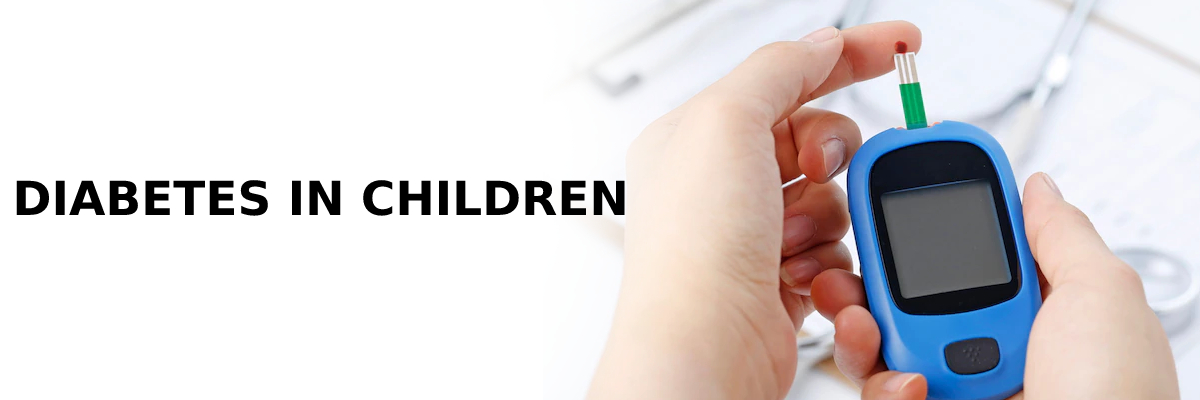
 IJCP Editorial Team
IJCP Editorial Team
DIABETES IN CHILDREN
Diabetes
mellitus is a major clinical and public health problem, afflicting approximately 1 in 10 individuals
with 6.7 million deaths worldwide. Tragically, the impact of
diabetes is extending beyond adulthood, with over 1.2 million children and
adolescents aged 0-19 years grappling with type 1 diabetes. The rising
prevalence is estimated to reach
643 million by 2030 and 783 million by 2045.
Diabetes is a potentially life-threatening condition causing increased blood glucose levels. There are different types of diabetes manifesting in children are:
Juvenile diabetes: The most common in children is type 1 diabetes, also called juvenile diabetes. It develops due to pancreatic dysfunction wherein either the pancreas does not produce sufficient insulin or the body's immune system destroys cells in the pancreas that produce insulin. It is an autoimmune and lifelong condition that must be managed with regular insulin injections.
Neonatal diabetes: It is a rare condition wherein babies are born with diabetes due to genetic mutation. Neonatal diabetes can disappear over time but elevates the risk of diabetes later in life.
Type 2 Diabetes: It generally occurs in the aged population due to ineffective utilization of insulin by the body. It is becoming increasingly common in children and teens due to rising incidences of sedentary lifestyles and unhealthy eating habits. Family history and obesity are the most common risk factors for developing type 2 diabetes in children.
Monogenic forms of diabetes: They are caused by genetic defects inherited from one or more affected family members. They are uncommon, with only 1 to 4% of cases. Onset is usually before age 25 years, and unlike type 1 and type 2 diabetes, there is no autoimmune destruction of beta-cells or insulin resistance.
Prediabetes - Prediabetes is associated with metabolic syndromes such as impaired glucose regulation, dyslipidemia, hypertension, and obesity. In obese children who persistently gain weight, prediabetes may be transient with reversion to normal in 2 years in 60% or progress to diabetes.
Symptoms of Diabetes in Children–
Though, diabetes is rare in children under 5, but if young children develop diabetes it is an extremely critical condition. Symptoms normally develop quickly, over a few weeks, and include:
Unexplained weight loss
Tiredness and fatigue
Having blurred vision or other eyesight issues\
Prone to infections (thrush)
Being irritable, restless or moody
Increased thirst and hunger
Frequent urination and bed wetting
Having fruity-smelling breath
The symptoms of type 2 diabetes and type 1 diabetes are similar but may vary in their degree of progression. The symptoms of diabetes tend to come on within a matter of days or weeks and may need urgent medical help as and when they appear.
Complications of diabetes in children -
Diabetic ketoacidosis is the most prevalent complication associated with T1D and develops in about 1-10% of patients each year, usually due to a lack of proper medical assistance. Healthcare facilitators can help minimize the risk factors by providing adequate education, opposite counseling, and medical and emotional support.
Vascular complications. Poor glycemic control is the most significant long-term risk factor for developing vascular complications. Microvascular complications are more common among children with type 2 diabetes than type 1 diabetes comprising diabetic nephropathy, retinopathy, and neuropathy. Macrovascular complications include coronary artery disease, peripheral vascular disease, and stroke.
Mental health issues like depression, anxiety, or other psychological problems have been observed among children with diabetes. These psychological concerns can revert to poor glycemic control by adversely affecting the child's ability to adhere to their dietary and medicinal regimens.
Management and Treatment of Diabetes in Children -
Testing blood glucose levels is a crucial part of managing diabetes. The most common method for checking blood glucose levels is with the help of an instant glucose-analyzing machine called a glucometer. Continuous glucose monitoring is also an option that can be used in conjunction with blood glucose testing to detect diabetes. However, diagnosing diabetes in children is difficult as there may be confusion between T1D and T2D.
Although diabetes has no cure, children with this disease can lead everyday lives with the help of effective control measures. Managing the disease focuses on
- Blood sugar monitoring and keeping the counts within range.
- Treatment techniques such as medication and insulin therapy, as recommended by the doctor
- Following the prescribed diet and maintaining healthy eating habits.
- Thirty minutes of daily exercise
Treatment for type 1 diabetes
Type 1 diabetes is a chronic (life-long) disease with no cure; however, it can be managed by insulin replacement methods via insulin injections or insulin pump therapy. When children are first diagnosed with type 1 diabetes, the initial focus should be treating dehydration and acidic blood and administering insulin to replace the missing insulin from the body. The patients might usually be required to stay in the hospital for a short time.
Treatment for type 2 diabetes
The treatment of type 2 diabetes starts with suitable medication to control blood sugar levels. Metformin (biguanide) is the preferred medicine that reduces glucose production and activates glucose uptake in peripheral tissues. In the case of chronic conditions, insulin injections can be prescribed by the healthcare professional.
Lifestyle modifications
In children with T1D and T2D, lifestyle modifications are paramount and a cornerstone for treating the disease, with nutritional changes being of utmost significance. Typical dietary recommendations involve the consumption of regular meals and healthy snacks, decreased portion sizes, consumption of calorie-free beverages such as water, and increased consumption of fruits and vegetables. A good healthy diet include foods that are:
- High in nutrients
- Low in fat
- Contain fewer calories, and
- Fewer animal products and sweets.
Diabetes education
Managing diabetes involves insulin balancing through dietary measures and physical activity. Diabetes education and self-management training form indispensable parts of diabetes management strategies as they are beneficial for creating disease awareness and helping to cope with the psychological aspects of the patient and family.
Take away
T2DM has surfaced as a severe epidemic in the pediatric population in the recent few decades. Considering the severity, American Diabetes Association (ADA) and World Health Organisation (WHO) have laid certain guidelines to diagnose and treat children with T1D and T2D. Lifestyle modifications focusing on physical activity and nutrition management are also crucial for properly managing diabetes.
Developing good diabetes management habits from the beginning can have a dramatic impact on their management habits in the long run. Regular check-ups are vital to identify and treat diabetes in children as early as possible. Talking with the doctor and following the recommendations is the key to diabetes management among children.

IJCP Editorial Team
Comprising seasoned professionals and experts from the medical field, the IJCP editorial team is dedicated to delivering timely and accurate content and thriving to provide attention-grabbing information for the readers. What sets them apart are their diverse expertise, spanning academia, research, and clinical practice, and their dedication to upholding the highest standards of quality and integrity. With a wealth of experience and a commitment to excellence, the IJCP editorial team strives to provide valuable perspectives, the latest trends, and in-depth analyses across various medical domains, all in a way that keeps you interested and engaged.









.png)




Please login to comment on this article